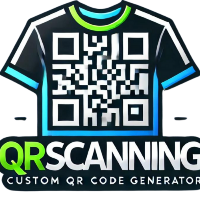
Share
In today's digital age, QR codes have become a key player in marketing campaigns, giving marketers a unique way to connect the physical world with digital platforms. As their usage becomes more widespread, businesses are not only pushing for creative QR code campaigns but also seeking ways to measure their effectiveness. Understanding how to measure QR code ROI is crucial for optimizing marketing strategies and making informed decisions.
Understanding QR Code Metrics
Before diving into ROI calculation, it's important to grasp the metrics involved in QR code performance analysis:
-
Scan Rate: The number of times the QR code is scanned. High scan rates often indicate strong engagement.
-
Conversion Rate: What percentage of the people who scanned the code took the desired action, like making a purchase or signing up for a newsletter?
-
Geographic Data: Understanding where scans are coming from helps tailor local marketing efforts.
-
Device and Platform Analysis: Knowing what devices people are using can help ensure compatibility and tailor content accordingly.
Calculating QR Code ROI
To effectively calculate the ROI of a QR code campaign, you need to follow these steps:
-
Define Clear Objectives: Start by outlining what success looks like for your QR code campaign. Is it increasing website traffic, boosting sales, or growing your email list?
-
Track Your Investment: This includes the costs associated with designing, printing, and promoting the QR codes, as well as any associated marketing expenses.
-
Measure Outcomes: Use analytics tools to track scans, user actions post-scan, and other metrics outlined previously.
-
Calculate ROI: Use the formula:
ROI = [(Net Profit - Cost of Investment) / Cost of Investment] x 100
Here, the net profit is any generated revenue attributed to QR code usage minus costs.
Tools for Measuring QR Code Effectiveness
To make the process more streamlined and accurate, leverage tools like Google Analytics for tracking online traffic or specific QR code analytics platforms that can offer real-time insights into user behavior. These tools help you gather comprehensive data, from the number of scans to user demographics.
Tips for Improving QR Code ROI
If you’re looking to boost the ROI from your QR code campaigns, consider the following strategies:
-
Optimize Landing Pages: Ensure that the web pages linked through your QR codes are mobile-friendly and aligned with the expectations set by the QR code.
-
Enhance Promotional Strategies: Integrate QR codes into both online and offline platforms to maximize reach and scan rates.
-
Incentivize Engagement: Encourage more scans by offering discounts or exclusive content accessible only through QR code visits.
Local SEO and QR Code ROI
Optimizing for local search is another effective tactic to enhance QR code performance. Since QR codes can provide data on where users are scanning from, use this information to tailor local marketing campaigns, ensuring those in proximity to your business are more likely to engage. For example, a local restaurant can use QR codes to offer deals to nearby college students based on scan location data.
Conclusion
Understanding how to measure QR code ROI is not merely about tracking numbers but about gaining deeper marketing insights to drive strategic decisions. By meticulously tracking metrics and utilizing advanced analytics, businesses can refine their campaigns for better results and higher returns. QR code marketing holds powerful potential, and when optimized, it can significantly contribute to your business goals.
Ready to see how QR codes can transform your business strategy? Contact us today for free quotes and learn how to tailor QR code solutions that perfectly fit your local needs. Whether you're a small business or a large enterprise, QRscanning has the expertise to elevate your marketing campaigns.
📞 Call Us: (833) 723-2800
✉️ Email: customercare@qrscanning.com


